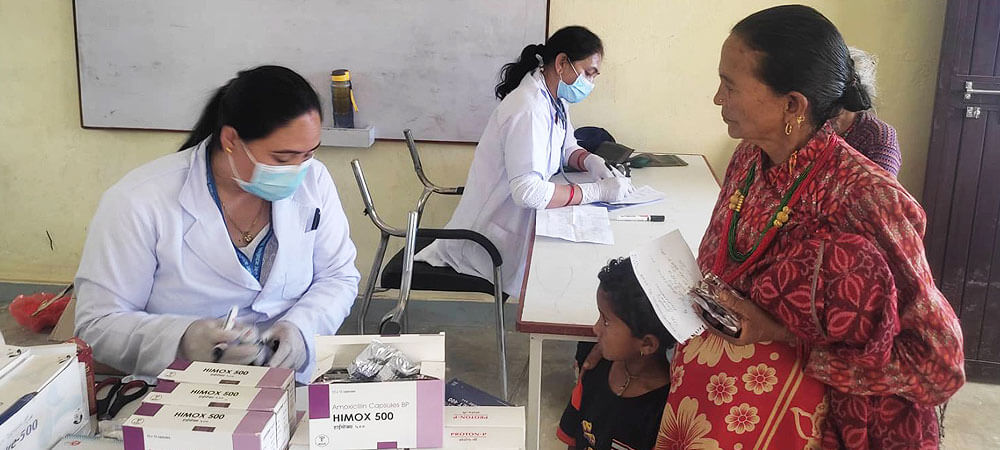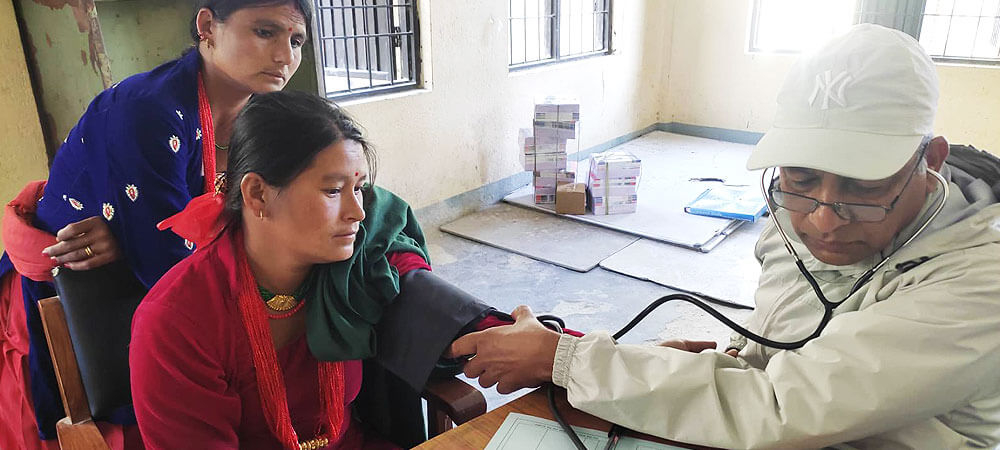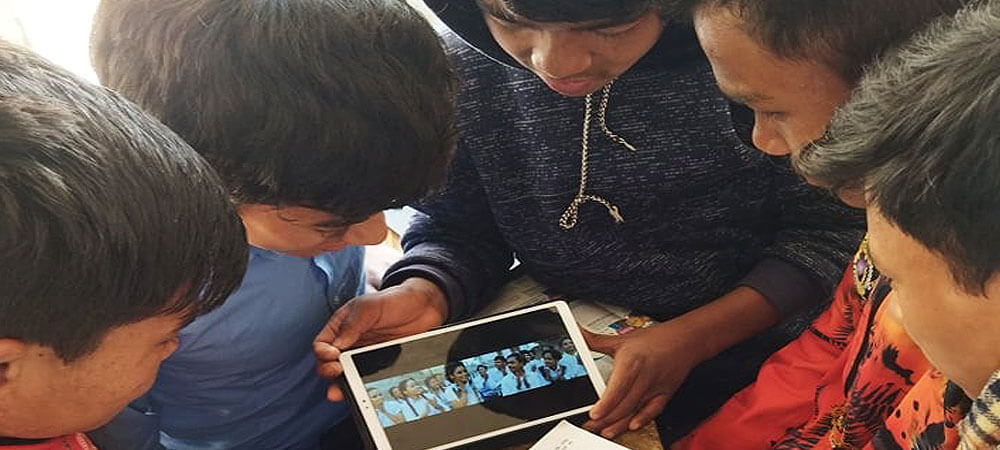IMPACT REPORT OF DIGITALIZATION
Title
Report
on
Impact of Tablets in Digital Learning
Janasahayog Secondary School, Sindhupalchowk
Submitted to:
Juerg Lichtenegger
Submitted by:
HOMES Nepal
Balaju, Kathmandu
www.homesnepal.org
March, 2022
Background
Impact Analysis on Students' Digital Learning
Digital learning is a term that encompasses a broad range of content and instruction methods, and that has come to mean a new model of education involving revised curriculum, infrastructure, teacher professional development, textbooks, and exams to provide students with technology and skill of 21st century such as creative problem solving. A particularly useful aspect of ICT in education includes accessing the enormous amount of educational resources on the Internet and online libraries. The networking of teachers, students and others can also produce a lively community sharing information, ideas and strategies. This has been seen applied nowadays in the curriculum of Nepal but its implications seems not well satisfactory. The provision of an Digital Learning system is an important factor in providing a comprehensive Information and Communications Technology solution within schools. Blackboard and other similar systems provide an easy to use, well-structured medium to support learning and teaching because students and teachers are able to access information from anywhere around the world. An E-Learning or digital system used properly is an important support structure for the delivery of modern, productive teaching and learning practice in their study, showed that the students’ computer skills had a strong correlation with their achievements. Therefore, it is important to consider the influence of computer skills on achievement when implementing ICT into the learning process. Furthermore, the school that implements a digital learning should consider students’ computer skills when dividing the students into groups based on students' abilities.
This study focuses on the impact of e-learning and digitalization on primary and secondary education Janasahayog School in Nargau, Sindhuplanchowok. The hardware components in the school consists of electronic tablet as a personal computer.
Objectives
Objective of the Analysis
The overall objective of the analysis was:
- To find out the real impact of digital or e-learning on the primary and secondary level school children in /students in Nepal
Specific Objectives:
The specific objectives of the impact study/analysis were:
- To know the real impact of tablets on students' learning pattern
- To know the level of knowledge acquire by the students' in the technology use
- To know the impact on teaching learning methods in the primary and secondary level teacher and students
Methods
Study Method: This analysis/study was followed mainly participatory methods. Other study methods followed and applied in this study were:
- Group discussion
- Questioning and Answering
- Face to face (F2F) interview
Activities-I
The activities of the impact analysis mainly concentrated within the core and peripheral structure of the school. The methods of the analysis or study were applied to School Students, School Teachers, School Principal, School Management and the community located around the school.
The following figure shows the entire stakeholders of the impact study/analysis of the:

Activities-I: Interaction with the Students:
The findings from the students interaction regarding the importance of digital learning was very positive and encouraging as they have exposed their view that digital tools and platforms are becoming ever more integral to their personal and working lives. Digital learning was found increasing access to education and knowledge while empowering students with a mindset and capabilities that sets them up for success in their present and future.
As per the students view, using digital resources provided learners with more time for active learning in the classroom and digital tools and resources provided more opportunity for active learning outside the classroom, as well as providing self-directed spaces, such as blogs and forums, and access to games with a learning benefit. Not only had that digital resources provided learners with opportunities to choose the learning resources. Likewise, students' views reflects that it has examined the impact of digital equipment, tools and resources on children's literacy. The effects are generally positive, though not as large as the effects found where digital learning is used to improve numeracy, and consistent in finding that tablet helps improve reading and writing skills, as well as developing speaking and listening skills.
The study found that Innovative use of digital technology to support learning in secondary education is being driven by a changing world and an emerging awareness of the importance of addressing the needs of all learners. Technology rich environments enable students to develop personalized, accessible, relevant, and high-quality learning opportunities that improve student engagement and achievement.
Digital technologies has found supporting in the following ways with positive impact in the following ways:
- provide new ways for students to be creative, collaborate easily, engage in learning and build social and global connections
- Enable students to choose ways of working that meet their needs.
- offer greater flexibility and the ability to customize lessons
- provide access to a rich mix of multimedia curriculum support materials
- Facilitate an increasing range of context, content, programmes, and learning pathways.
Likewise, another important impact of digital learning was found in the section of learning attitudes of the students. The learning attitude increased
- The students’ ambition to learn and understand as much as possible. So it found increasing ambitious learning goals
- the relevance students attribute to school for their future working careers which points the value of school
- Students developed the sense of belonging to the school community
- Students’ commitment to work hard and to improve performance that develops the students' motivation to master tasks.
- students’ ability to overcome difficulties on their own increasing the self-efficacy
- The satisfaction students get from learning and reading and they got enjoyment of reading.
Activities-II, III, IV
Activities-II: Interaction with the Teachers:
Teachers are the main conveyer of the learning to the students and they are always seeking to teaching methodologies that students' easily receivable. The following were the impact of tablets to the teachers:
- Teachers themselves got change to use tablets for e-learning. Before that, they saw the tablets in the internet.
- They get motivated to search new teaching materials for teaching
- Easy to understand the things and deliver to the students
- Learnt teaching methods and methodologies effectively
- Time saving
- Environment friendly (less utilization of chalk, duster, marker and papers)
Activities-III: Interactions with the Guardians/Parents
The parents always wanted to their children learn more and understand more and get good marks in the exam. The impact study team visited the some parents door and questioned regarding to the tablets e-learning in home and school. The guardians' perceptions of the tablets e-learning to their children:
- More interested regarding to previous time when they received tablets
- Finished their home work so fast and helped to our household work as well.
- Received smiley faces during study time.
- Children loved so much tablets and kept in very safe place
Activities-IV: Interactions with School Principal and Management
School management team including principal are always seeking to improve school education and wanted to develop more and more equipped with education learning/teaching materials. They appreciated the support from Juerg, Utikon and HOMES Nepal. Moreover, they wanted to provide more tablets to all students for their education to compete the national and world education.
Conclusion
Handling of Tablets:
School management, teachers and volunteers provided the proper guidance how to handle the tablets. The covers we provided were effective and kept tablets in safe. Till date all tablets are working, not broken, not stolen which means tablets are in safe hands. Moreover, school teachers and volunteers visited the every door steps of student's houses and provided the instructions to the parents how to keep tablets in safe places, handling well and possible risk like using tablets with wet hands, over charging, exposer to the sunlight and heat etc.
Conclusion
E-learning is essential to every school of Nepal especially those school who are behind and shadow areas of hilly areas of Nepal like Janasahayog School. Furthermore, students can share the unsolved problems sharing with peers in group work by creating virtual group. During study at home, when they have problems and not solved by friends, they can solve problems by asking teachers virtually. At the same time, parents can interacts with teachers and vice versa to talk about the progress of children and receive suggestions. At the time of COVID, tablets were used virtual learning. After physical class restoration, tablets are using for the assistance of learning which enhanced the students learning and teachers deliver skills. As per the record (report card), students secured good marks regarding to previous physical test.
During our study time, the small kids are more interested about the tablets and realized that its essential to provide tablets from the grade one above because they will familiarize with the gadgets and e-learning which foster the knowledge and will able to compete the global education. In school, school teacher will be responsible and in home, parents will be responsible for handling of gadgets and also learn how to handle gadgets from seniors.
The overall impact of the tablet e-learning is very good and it's essential to provide tablets to make excellent e-learning and raising their educational status.
Photographs
| Some photographs during Impact Study of Digitalization | |
|
|
|
| Mr. Badri Paudel (HOMES Nepal) interacting with students | |
|
|
|
|
|
|
|
|
|
|
|
|
|
|
|
|
|
|
|
|
|
| Student's door steps visit and interaction with parents | |
|
|
|
|
|
|
| Students are sharing the impact of tables with Mr. Badri Paudel (Chairperson of HOMES Nepal) | |
|
|
|
| Head teacher and teacher sharing their experience with digital learning | |







































